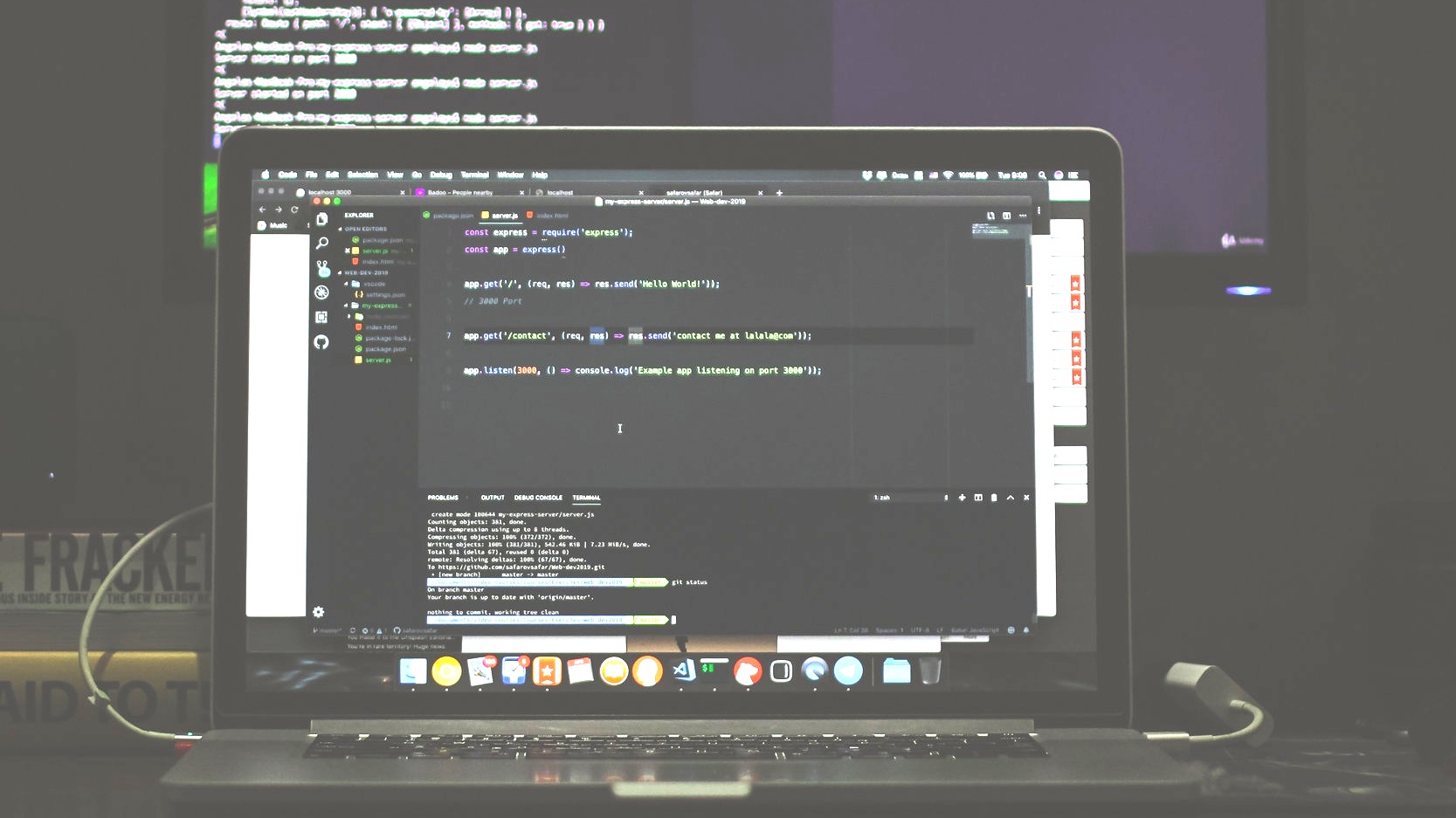Nerd Glossary
This post is determined to be an ongoing explanation of the terms that Web Nerds live and breathe on a daily basis. Hopefully it will answer questions you might have about the Web Design/Development process.
Help us grow the list by suggesting terms: Shout
Domain
The unique name that appears in your website’s URL
It’s kind of like your online fingerprint — it’s specific to you. Although other websites may have domain names like it, your domain name is yours alone. To get the rights to your domain name, you must purchase it and register it annually, which factors into your initial and ongoing website costs. Your domain will cost around $10-20 per year.
Why does a domain matter?
Your domain name is essential because it creates an online identity for your website.
A domain name also establishes credibility with site visitors and potential customers while helping you grow your brand. It’s also valuable because if you ever change your hosting, your domain name will go with you.
Hosting
A service that allows internet users to access your website
Hosting is a service that allows Internet users to access your website. A web host provides space on its server for your site, allowing people around the world to view it. Website hosting is an upfront and ongoing website cost factor.
SQUARESPACE is the host we use for all client websites. Every site is built within the Squarespace web builder, and going-forward, you use their tools to easily edit all content within the site.
Your Squarespace site will cost about $20 per month. https://www.squarespace.com/pricing
This can be paid via credit card annually or as a monthly subscription.
We won't need to setup hosting until we're ready to launch the site. At that time we'll help get everything setup.
Design
Elements that work together to create your website
Web design focuses on not only the visuals of your website but also the usability of your site. As a result, it’s one of the most expensive — and influential — website cost factors, having a direct impact on the performance of your site.
Why does web design matter?
From the perspective of users, as well as search engines, web design is critical.
Studies show that when it comes to users, 94 percent if their first impression relates to web design. If your site appears outdated or makes navigation difficult, users will leave your website. Even worse, their opinion of your brand will drop.
Google and other search engines also care about your site’s functionality, performance, and design. They want to provide users with relevant results and the best online performance, so if you have a slow, unusable website, they won’t display it at the top of search results.
How much does web design cost?
In most cases, the simpler the design, the lower the price. That doesn’t mean businesses should opt for a laid back, bare bones design. Instead, your company needs to consider its target audience and create a website that captures user expectations for your brand and products.
If your company sells luxury goods, like fine jewelry, for example, you need a site that demonstrates the quality of your products and services. In this example, when investing in a simple website, you’ll miss the mark with your target audience, resulting in lost revenue.
That’s why a WEB DESIGN AGENCY will often ask about your target audience.
Responsive Design
Allows users on any device to experience your website in the same way.
Responsive Design is what adapts your website to a user’s device. If a user visits your site on their desktop, tablet, or mobile device, they have a seamless experience. With more consumers browsing on-the-go, responsive design is essential. Responsive Design is technically a roadmap that considers how the users will browse a site and will tell the elements on the page to react accordingly.
Why does responsive design matter?
With much more than half of the world’s Internet traffic coming from mobile devices, it’s clear that users are changing the way they browse the Internet. A responsive design plan ensures your website supports every member of your target audience. That’s why it’s critical for companies to invest in responsive web design.
Content Management System
(CMS): allows you and your team to edit information on your website.
With a CMS, you can make updates to your website, without having to edit any code or the expertise of a developer. This includes adding text, images, videos, testimonials, forms and so much more. We exclusively use the Squarespace CMS for all websites that we build, and partnered with Squarespace's own Support team, we can help you with training and ongoing support.
Template Development
Using code to develop the overall site theme, consistent with the homepage design & UI Design specification.
We call it “pixel-perfect” development, because every pixel is sacred. (I sound like a Designer because I am) But seriously, when we jump into development, we are prepared to use the design as our guide.
This stage includes setting up the Squarespace CMS, creating your custom theme and page designs, and setting up your website’s analytics.
Once we've finished our Design and Development work, we get to work testing your site’s performance and reliability. We’ll use various tools to benchmark your site for loading, responsiveness, and speed, while also ensuring that it works reliably on all web browsers and mobile devices.
After certainty that your site is ready to be released to the public, we’ll deploy it on your public domain. This typically involves helping you with switching your domain settings to point to the new Squarespace site.
Stock Images
Existing photos –already created– made available for license by paying a fee to both the artists that produced them and the agency managing them, acquiring the right to use them legally in different ways, while the author retains copyright of their work.
Stock images (that includes stock photography, illustrations and even video) has many perks for businesses and creatives, but the main, most immediate and most evident benefits are the time and money savings.
We always encourage our clients to look at FREE stock resources, where the photographers have relinquished royalties in exchange for strengthening open-source communities and just being all-around-awesome.
View our extensive lists of free Stock images:
Background Video
"I haven't failed. I've just found 10,000 ways that won't work."
—Thomas Edison
When done well, though, a background video can be a great, subtle design touch that adds that extra layer of thoughtfulness.
Large video backgrounds are considered one of the most engaging ways to portray a company's vision, mission and capabilities. What better way to grab someone's attention than with a video? The Internet loves videos!
Avoid mistakes by following these guidelines:
Compress the video as much as you can
There’s nothing worse than visiting a website and having the background video stopping and starting as it tries to buffer all the way through. It's distracting and gives the feeling that the whole website is loading slowly, even if the rest has already loaded.To avoid this, we really need to compress the video down to the lowest bitrate that we think looks acceptable. It's tempting to use a high quality, 1080p video that looks perfectly crisp and sexy, but it's just not worth the trade-off for loading time and interrupted streaming.
You really should be using 720p video with a low frame rate of 24 or 25 frames per second, and test a few different bitrates between 750k and 1250k, before choosing the lowest one that you think is acceptable.
Limit the total size and length of your video
A low bitrate helps to ensure our video plays through smoothly without pausing to buffer, but we also need to remember that our users didn't come to our website to watch our background video, and we shouldn't assume they're happy to download a full 2 minutes of video, which could be up to 20MB of video that they didn't ask for.You should always limit the length of your video to 30-40 seconds at the most, or even better, find a short video that loops seamlessly, so that it seems like a longer video, but could be less than 1MB or 2MB in size, depending on the length. We’re working on a post to share some killer editing secrets to creating a great looping video
Avoid excessive movement
The key word in 'background video' is 'background'. By it's very definition, the video is supplementary to the website's content, and we need to ensure that it doesn't steal the focus. Background videos should be subtle and smooth to avoid distracting our users from what they should really be doing on our website. Avoid things like fast or excessive panning, shaky/unstabilized footage, and quick cuts. (Unless your brand calls for it!)Ensure sufficient contrast with foreground text
If there's text positioned over your video, it's important to make sure it's readable. If the text color clashes with the video, you might need to add an overlay to help distinguish the text, change the text color, or give the text a text-shadow or a background.Account for devices
At this point in time, background video support on mobile devices is getting better and better. iOS now plays “auto-play” videos. However, because we’re coming out of the dark-ages on these recent “no background videos on iOS” policies, adding background video should always be tested with lots of patience, an open mind and an eager development team who can come up with ideas at the drop of a hat.We always prefer to fall-back to an image background
Using a “fallback image” is always best. If the video is slow to load, or will not load, the code is written to load the jpg image into the background of that container. For best results, using the FIRST FRAME of your background video is the best. It allows the browser to seamlessly jump from JPG to VIDEO without even detecting the jump.
Training
We will fully train you by recording step-by-step video screencasts to make sure you're ready to manage all pages.
We don’t make assumptions about your Squarespace editing skill level; we record all the basics before getting-into page specifics. The training videos will then be stored within the site's "admin" area, so you can return to it at any time in the future.
Here’s an example of recent training on The Heavyweights blog:

















